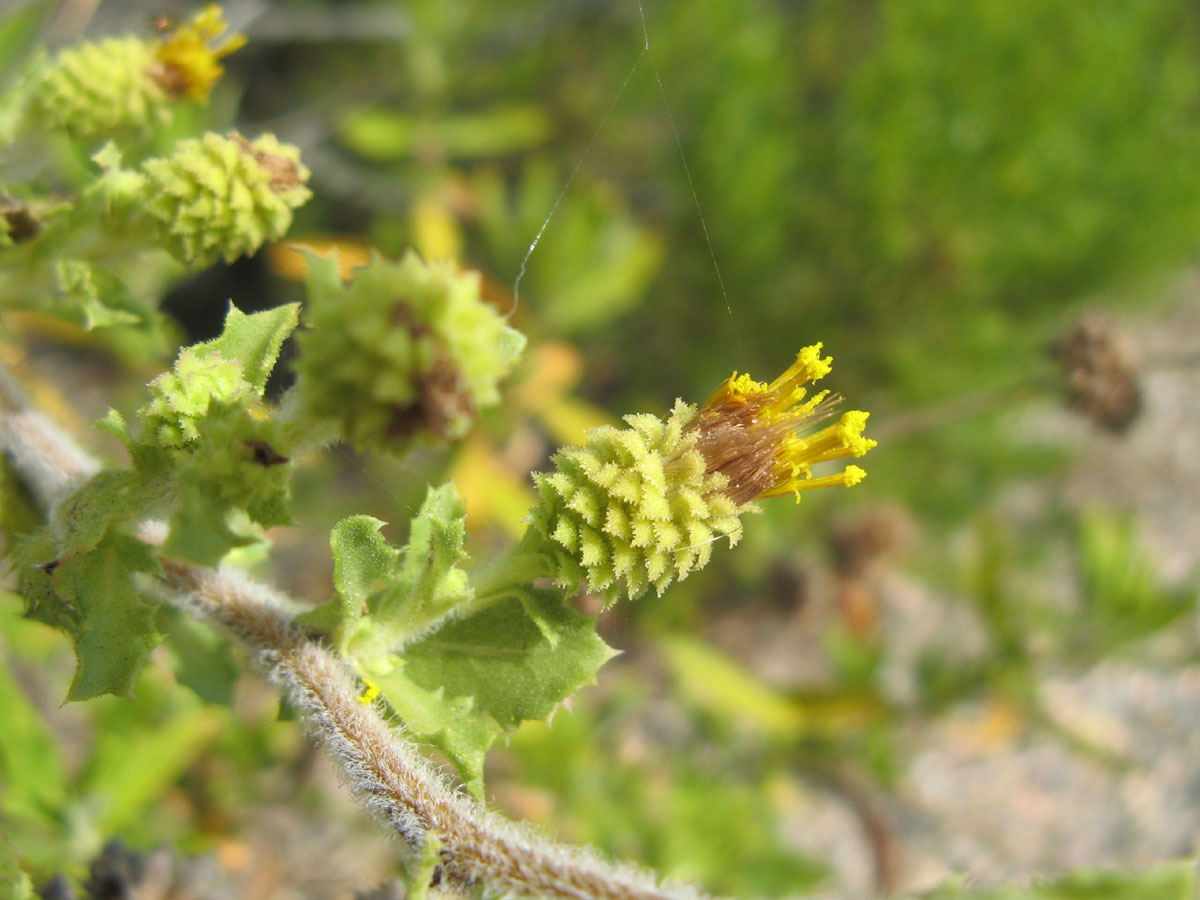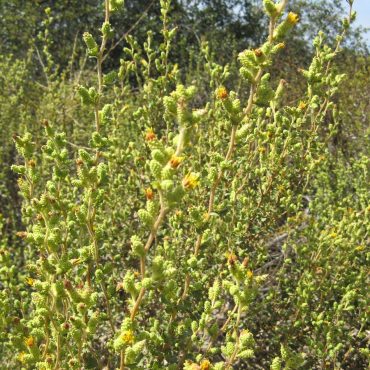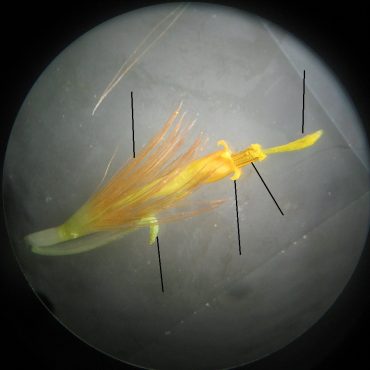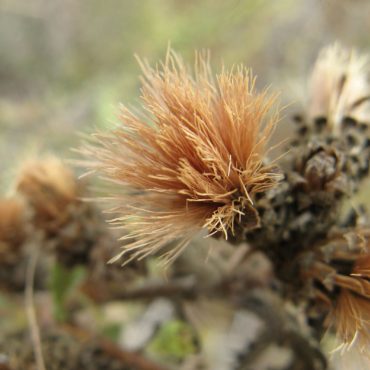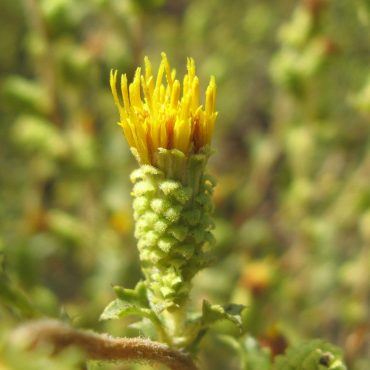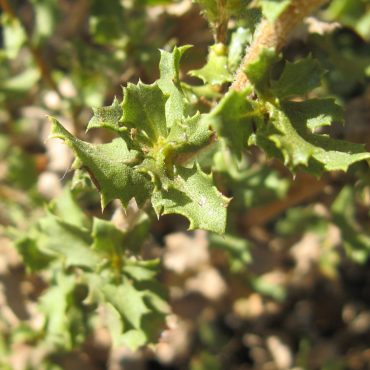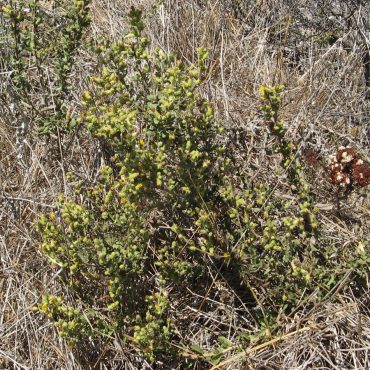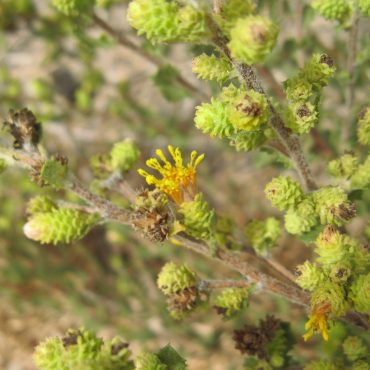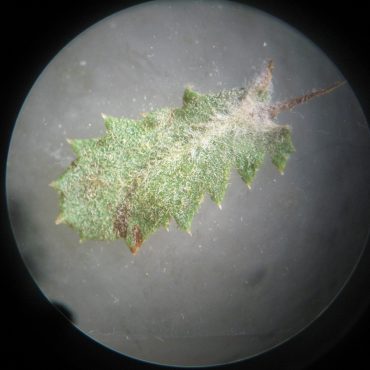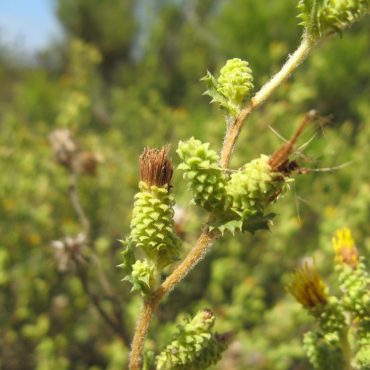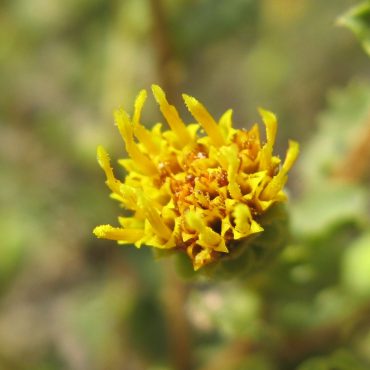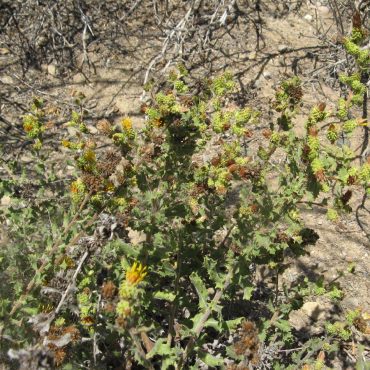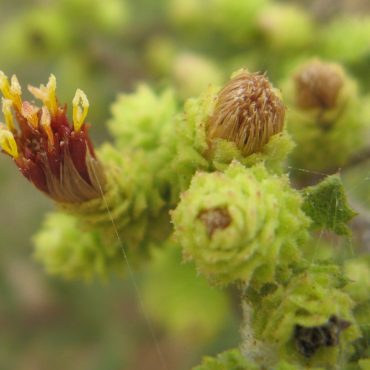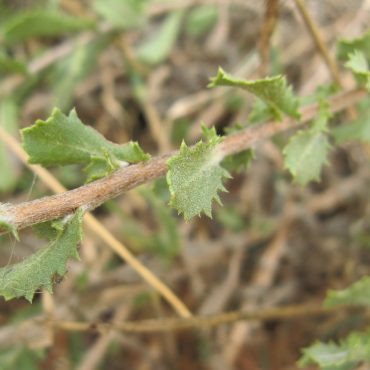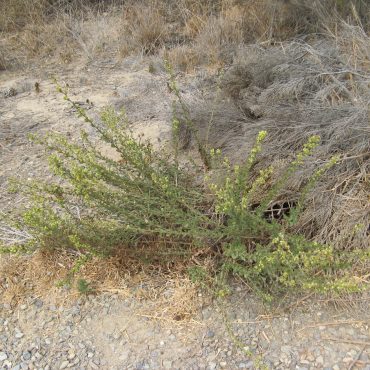Sawtooth goldenbush is an upright or spreading, much-branched sub-shrub, usually less than three feet (1 m) high. The outer branches are covered with loose white hairs and may have a zig-zag shape, changing direction at flowering nodes. The leaves are small and oval, thickened and leathery, and they clasp the stem directly. Leaves are generally less than 1.5 inches ( 4 cm) long, flat or strongly undulated, with strong, sharp marginal teeth. The upper leaf surface is usually smooth, but the lower may have white hairs along the midvein, especially near the base.
Flower heads are born in small clusters in leaf axils spaced out along the outer portions of the branches. The involucre is elongated, to 1/2 inch (1.2 cm) in length with numerous phyllaries in eight to ten overlapping series (like shingles) and covered with short pale glandular hairs. The tip of each phyllary is acute and flares out and down, giving the unopened flower head the look of a pinecone. Flowers are bisexual disk florets about 1/2 inch (2.5 cm) long, yellow, tinged or striped with red. There is a single pistil with an inferior ovary and a two-branched stigmatic style. There are five stamens; the anthers are united into a tube around the style. Adjacent flower heads do not open at the same time and the plant never develops the color impact of the related goldenbush (Isocoma menziesii). The primary bloom time is June to Oct.1
The fruit is a small elongated one-seeded capsule, often with the brown, withered corolla persisting. The white or tawny pappus is a single row of bristles, longer than the capsule; it provides lift and dispersal in the wind. When seeds are mature, the phyllaries spread out to allow their release.

